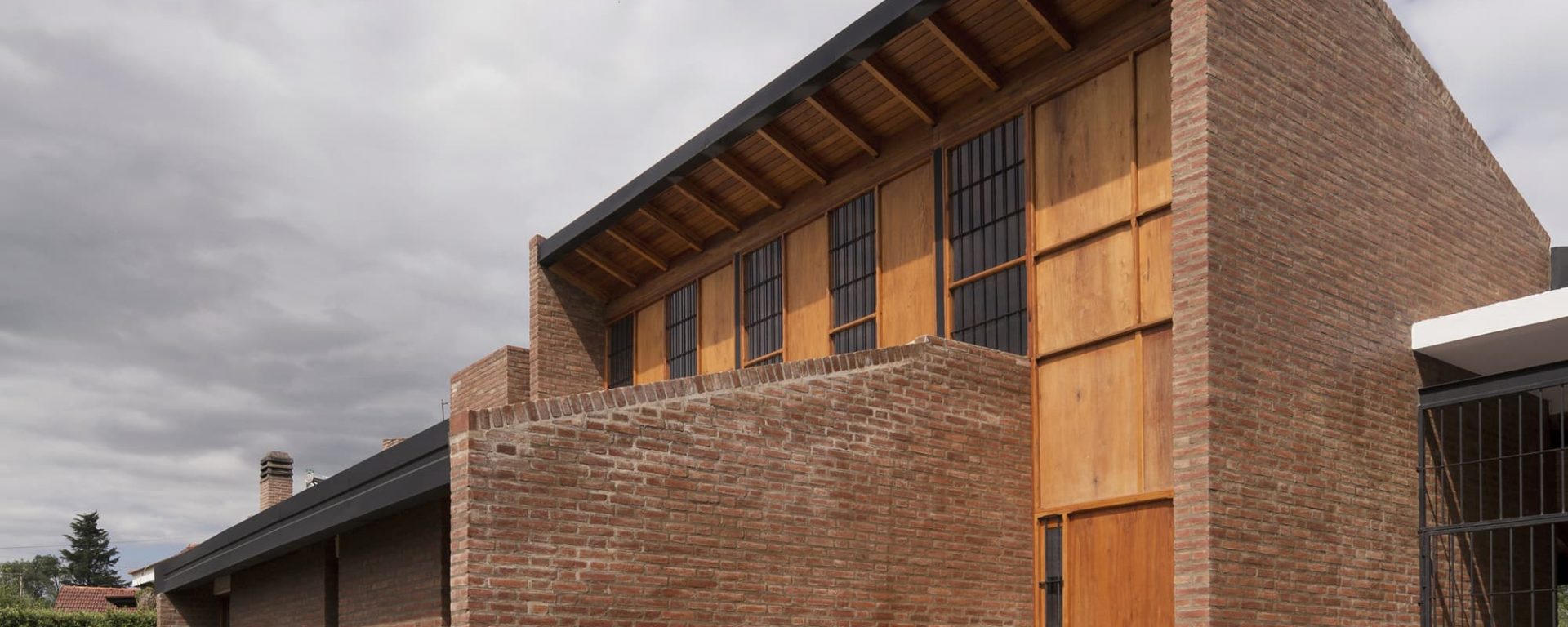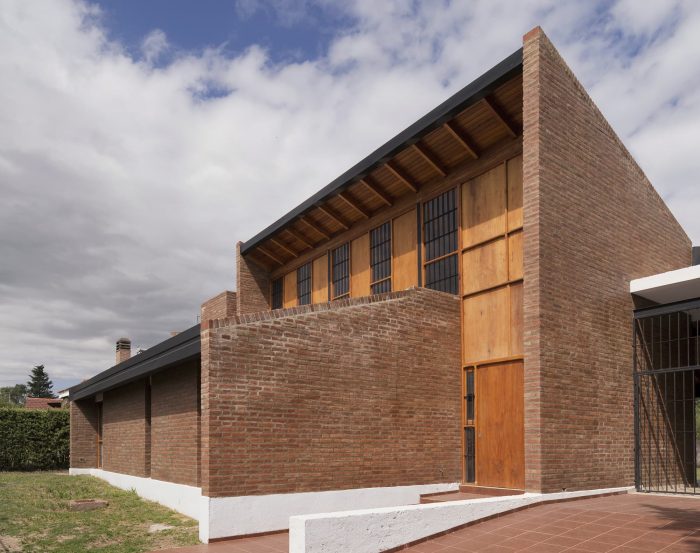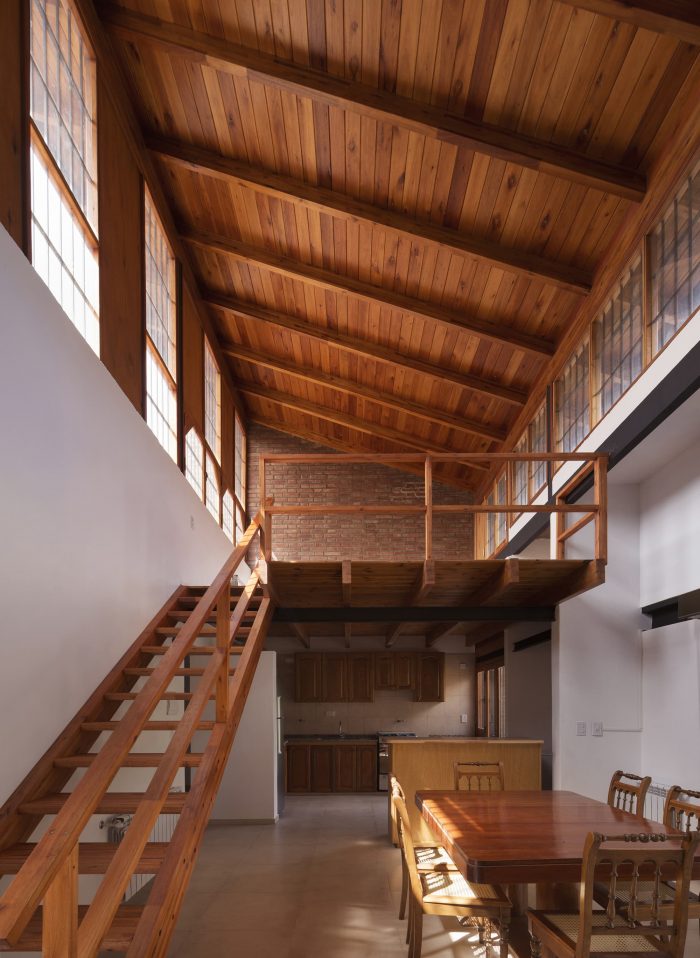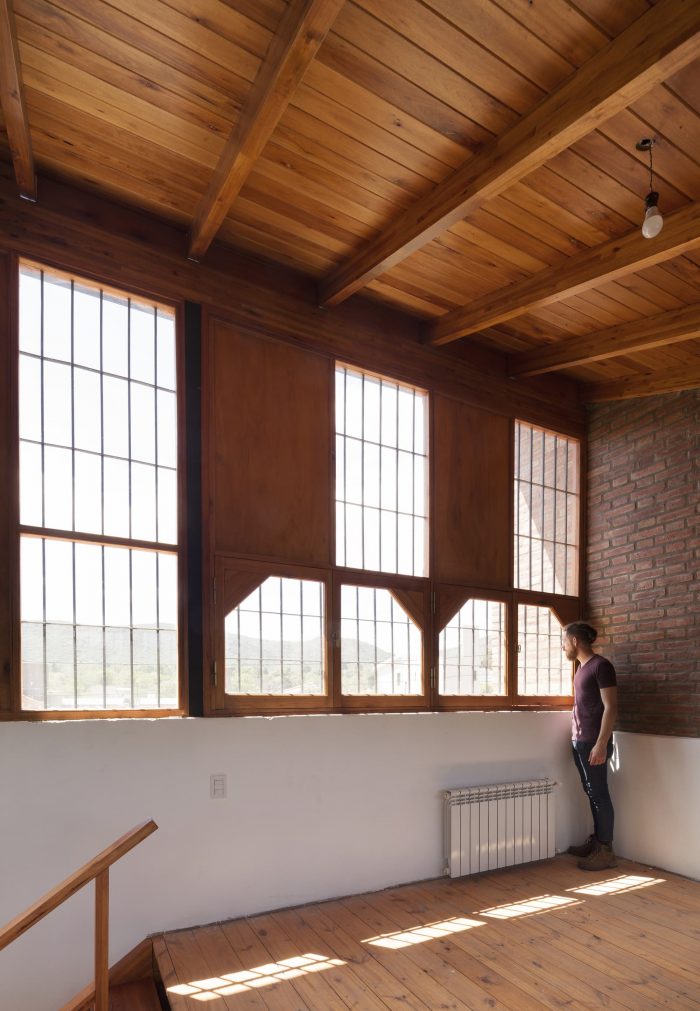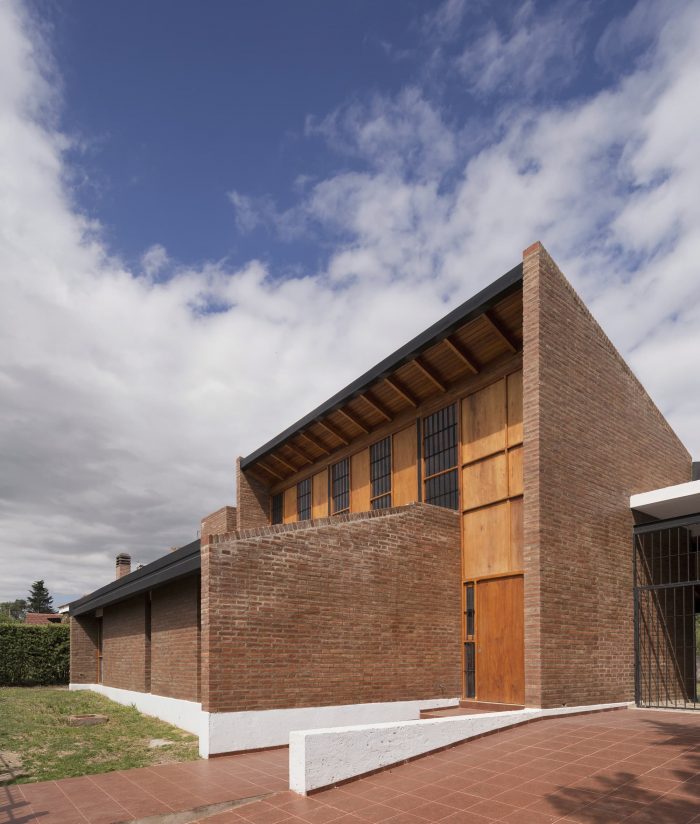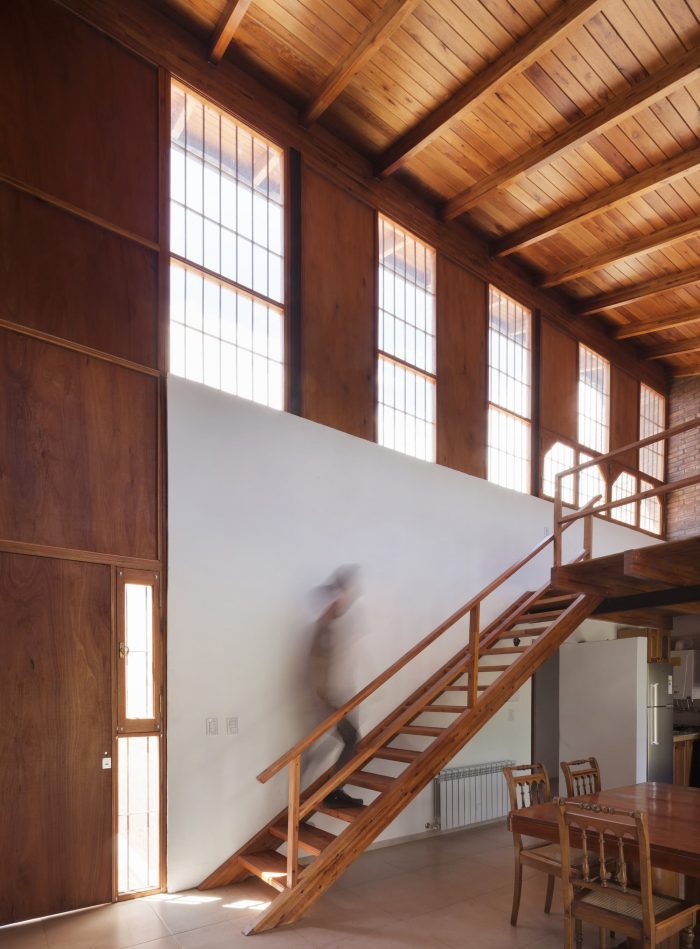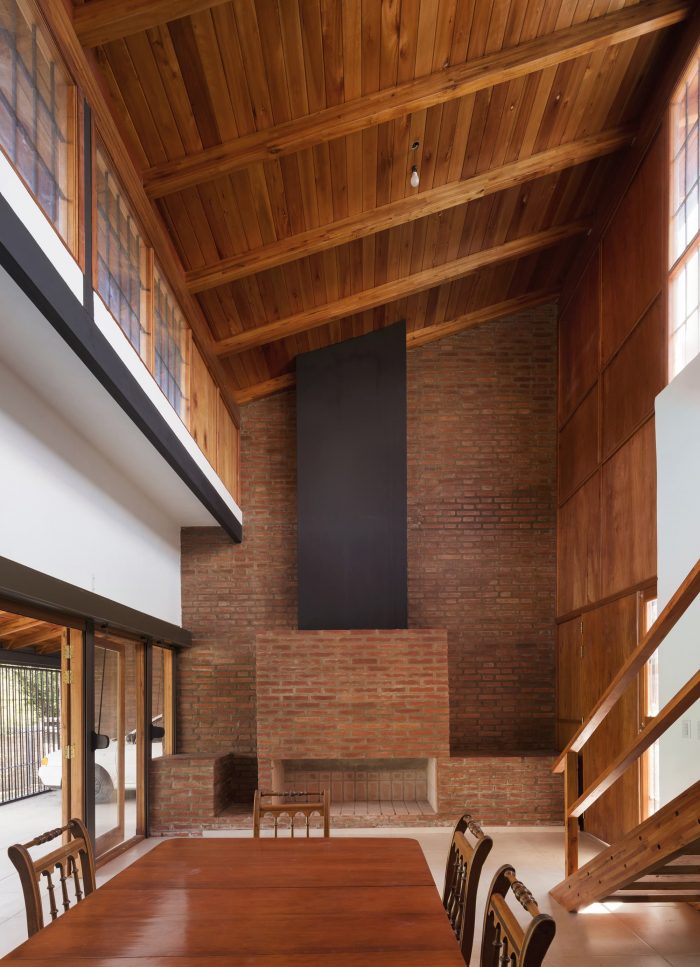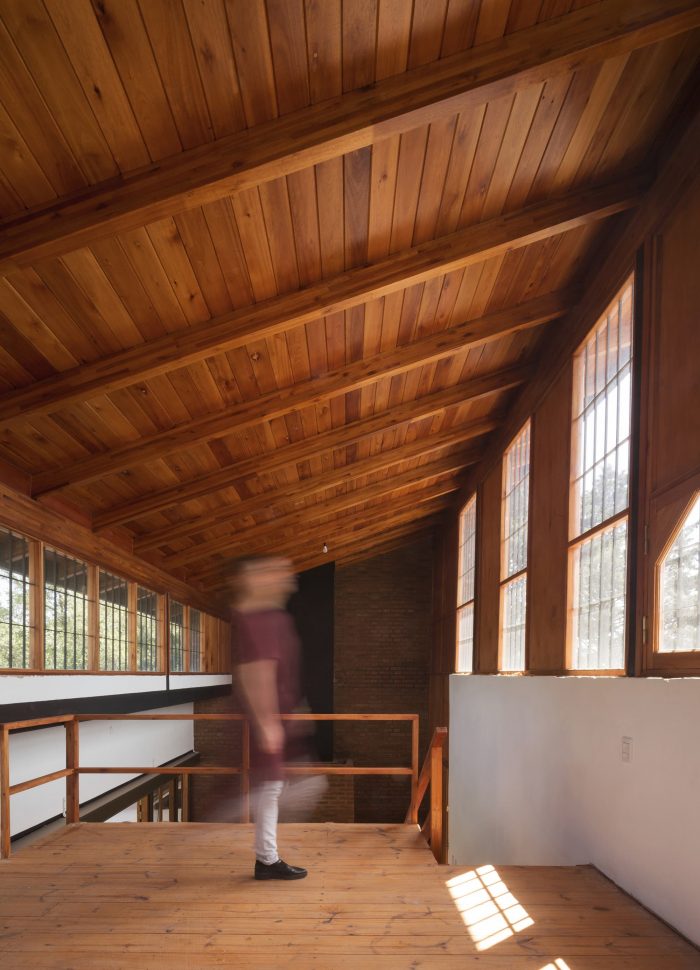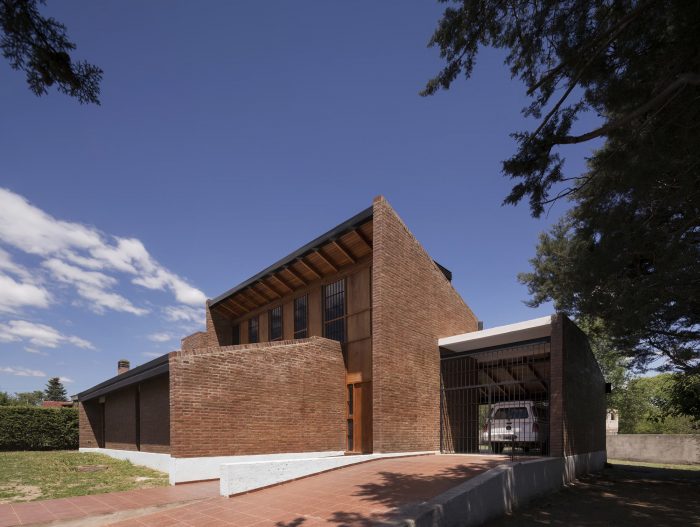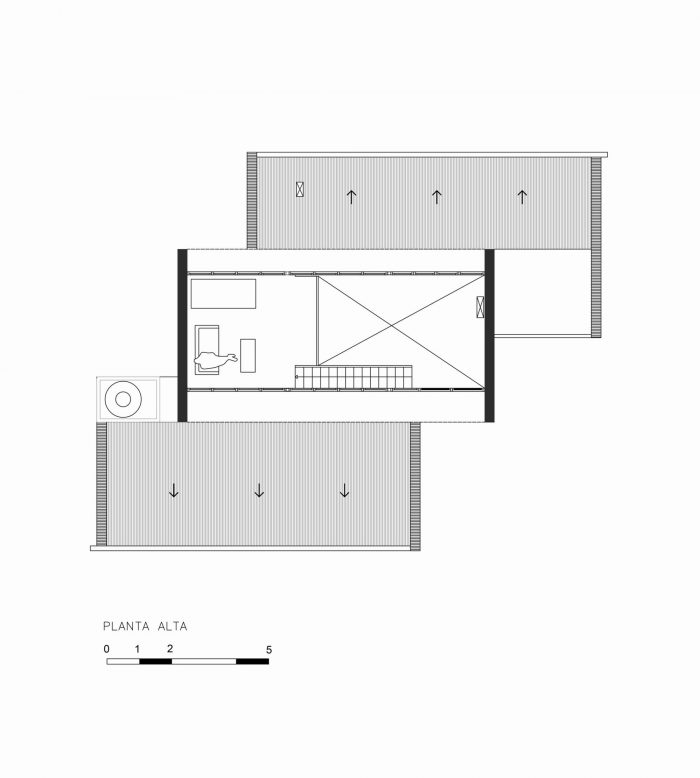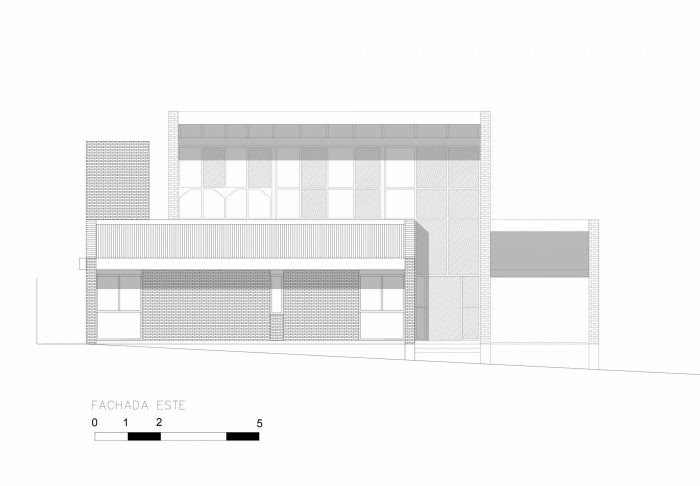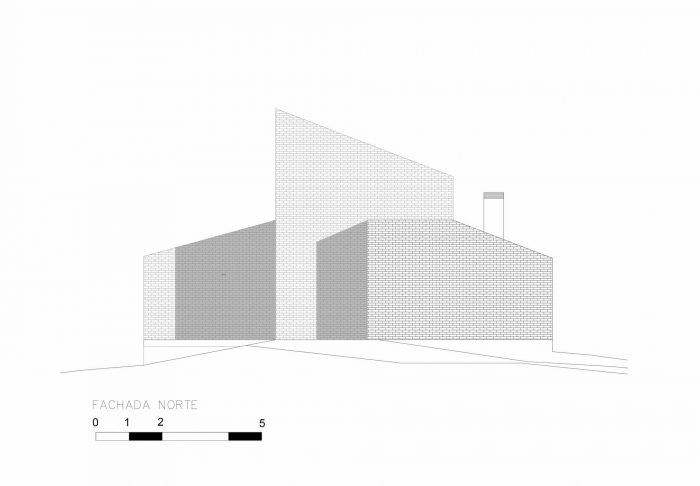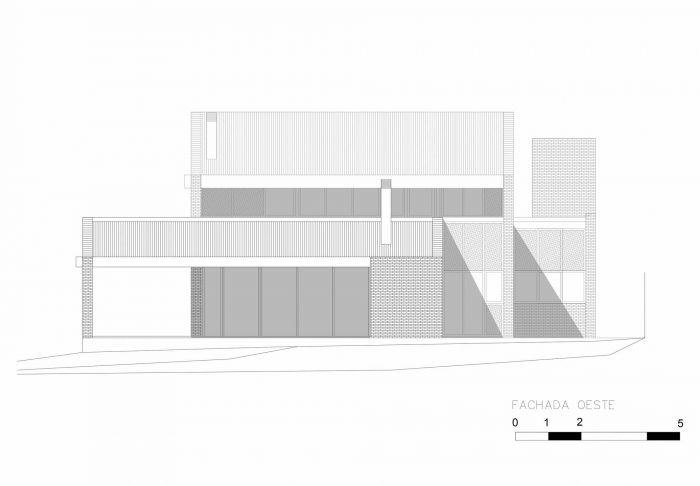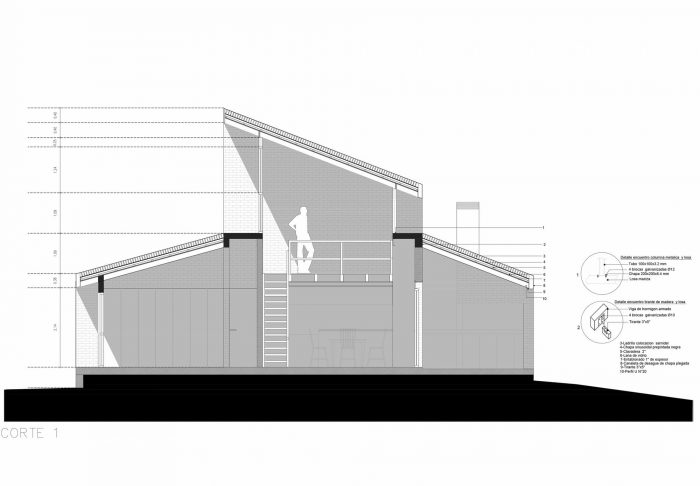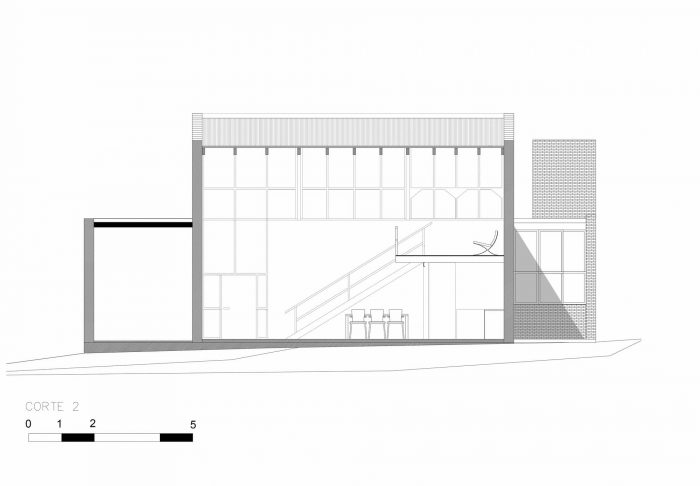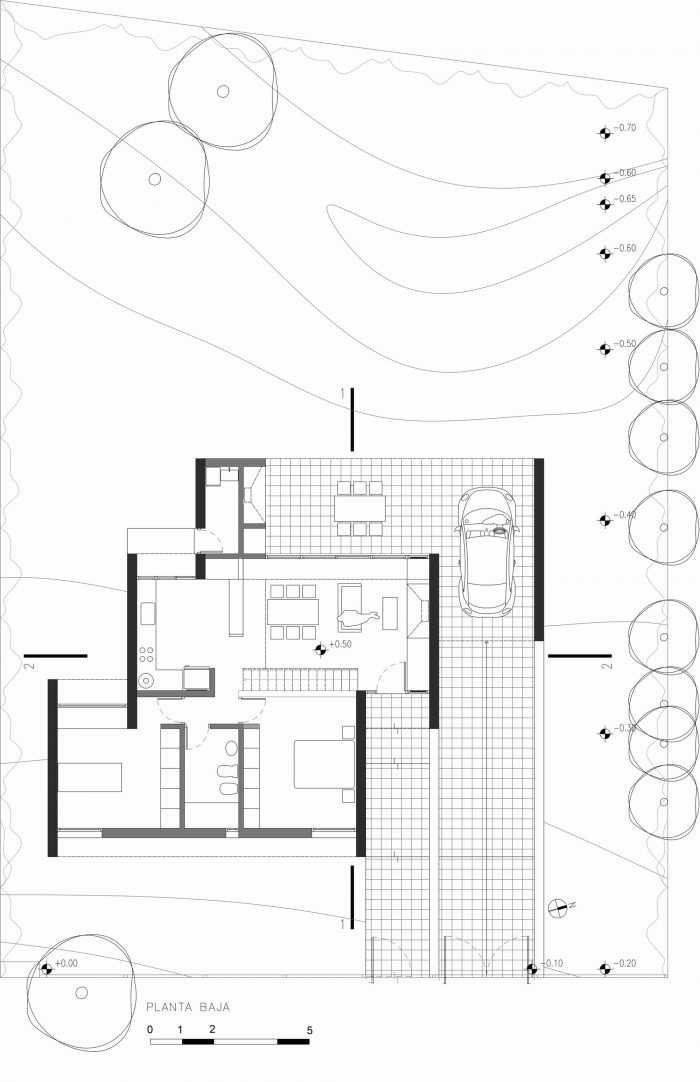该房屋位于卡洛斯-帕斯市郊的一个开放街区。在它所在的区域,周末住宅与其他永久性住房单元并存。在一个不规则的地形中,三个具有不同功能的砖体组成了这个房子。
The house is located in an open neighborhood on the outskirts of the city of Carlos Paz. In the sector where it is located, weekend homes coexist with other permanent housing units. In an irregular terrain, three brick bodies with different functions that make up this house are housed.
这些主体相互分离,以产生场所,捕捉光线和空气。包含社会空间的中央体,为了寻找最远的山的景色而升起,扩大了空间的体积。在夹层中,有一个学习、集中和沉思的地方。其他主体包含前面的卧室和朝向花园的画廊-车库。
These bodies are separated from each other to generate places, capture light, and air. The central body, which contains the social space, rises in search of the view of the farthest mountains and expands the volume of the space. On the mezzanine, there is a place of study, concentration, and contemplation. The other bodies contain bedrooms in the front and the gallery-garage towards the garden.
材料是砖、木材和饰面。这些技术响应了通常建造木屋或小木屋的地方的建设传统。屋顶向前和向下倾斜,以通过地球的自然坡度排水。
The materials are brick, wood, and veneer. The techniques respond to the constructive tradition of the place where chalets or cabins are usually built. The roof leans forward and downward to drain the waters through the natural slopes of the earth.
Architects: 226 arquitectos
Area : 160 m²
Year : 2018
Photographs :Federico Cairoli
Manufacturers : AutoDesk, ACINDAR, FV, Google, Moconá, Talpe lit, VASA
Lead Architects : Tristan Bondone
Design Team : Tristan Bondone, Luciano Femopase, Julian Genesio, Manuela Madruga, Sofia Asan
Clients : Dolores y Oscar Copello
Engineering : Incorp
City : Villa Carlos Paz
Country : Argentina

